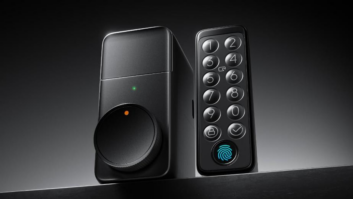Sales at Best Buy and Conn’s have been impacted by inventory constraints that are only now beginning to ease, the chains reported.
During earnings conference calls held in late March, executives described a situation where pullbacks in production and greater than anticipated demand left merchants scrambling for product and sales on the table.
The shortages stemmed from the industry’s dramatic double-digit sales declines in October, November and most of December, explained Mike Vitelli, executive VP of Best Buy’s consumer operating group. That, plus Circuit City’s bankruptcy and store closings, resulted in “massive reductions in production plans,” he said.
“It usually takes six weeks to rebound inventory,” but with the shortages coming at the end of a product cycle, the rebound never came, he said.
That left Best Buy high and dry when comp-store sales began to pick up in January and February, said executive VP and chief financial officer Jim Muehlbauer. The good news, he said,, was that the company “avoided expensive markdowns,” although close rates fell dramatically in February as a result of the shortages.
All told, Best Buy’s domestic sales were essentially flat, edging up less than 1 percent to $11.3 billion for the three months, ended Feb. 28, while same-store sales slipped nearly 5 percent.
Conn’s president, COO and CEO-elect Timothy Frank said his company was forced to temporarily consolidate its TV selection as a result of shortages he attributed to “a cautious outlook on inventory levels by manufacturers.” But thanks to the efforts of vendors — including Toshiba and Panasonic, who “stepped up” with extra inventory — the multiregional retailer was able to stay in stock on key brands and screen sizes, he said.
Nevertheless, the combination of product shortages and a flood of Circuit City liquidation inventory sent February same-store sales down 6 percent and limited net sales to a low single-digit increase, he said.
Availability has begun to ease with manufacturers’ transition to 2009 models, Frank said, and March trends improved along with the first wave of new arrivals: Comps were down 1 percent month-to-date and net sales were ahead by the mid-single digits, he noted.
Best Buy was still not fully back in stock either, Muehlbauer noted. Half of the stores’ SKUs were set the weekend of March 21, and the company would be in a better position to assess consumer demand and adjust inventory levels early this month, added Vitelli.
Elsewhere, the big-box chains made no bones about their plans to aggressively grab market share relinquished by Circuit City. Vitelli said Best Buy is focusing on areas of customer overlap, especially within the digital imaging, computing and higher-end home-theater categories.
“We will capture more than our fair share,” added Muehlbauer, based on Best Buy’s experience from CompUSA’s liquidation and the “lift” his company saw from Circuit City’s initial 150 store closings in November.
Outgoing CEO Brad Anderson reminded analysts, “We’ve been through this with other competitors. [Circuit City’s customers] made a conscious decision not to shop with us, and we’ve got to win those customers over one at a time.”
President, COO and CEO-elect Brian Dunn agreed: “It’s all about customer acquisition, and this is a wonderful opportunity to bring in new customers and bring back those who left.” He said the battle will be fought at the store level, and that Best Buy will leverage its full enterprise capabilities to support local efforts.
For Conn’s, the stakes are an estimated $450 million in Circuit City sales in overlapping product categories and stores, Frank said. Conn’s is well-positioned to capture Circuit customers, who are more likely to choose another big-box format, he noted, and will press its advantage by funding aggressive pricing with savings from lowered advertising costs. The company also plans to drive growth through a 30-store remodeling program, a redesigned e-commerce site, and the additions of Panasonic, Bosch and Electrolux to its brand roster.
At the same time, Conn’s and Best Buy said they will closely monitor SKU performance to get the biggest bang for their buck on the sales floor. “We will continue to review and evaluate SKU performance,” Frank said, while Vitelli described an aggressive rationalization of Best Buy’s assortment “to improve in-stocks of the best-selling SKUs.
“We’re taking out the slower SKUs and creating more facings and stock space with those that do really well,” Vitelli said. The effort has improved efficiency, increased turns and kept the assortment competitive. “We’re pleased with the results,” he noted.













